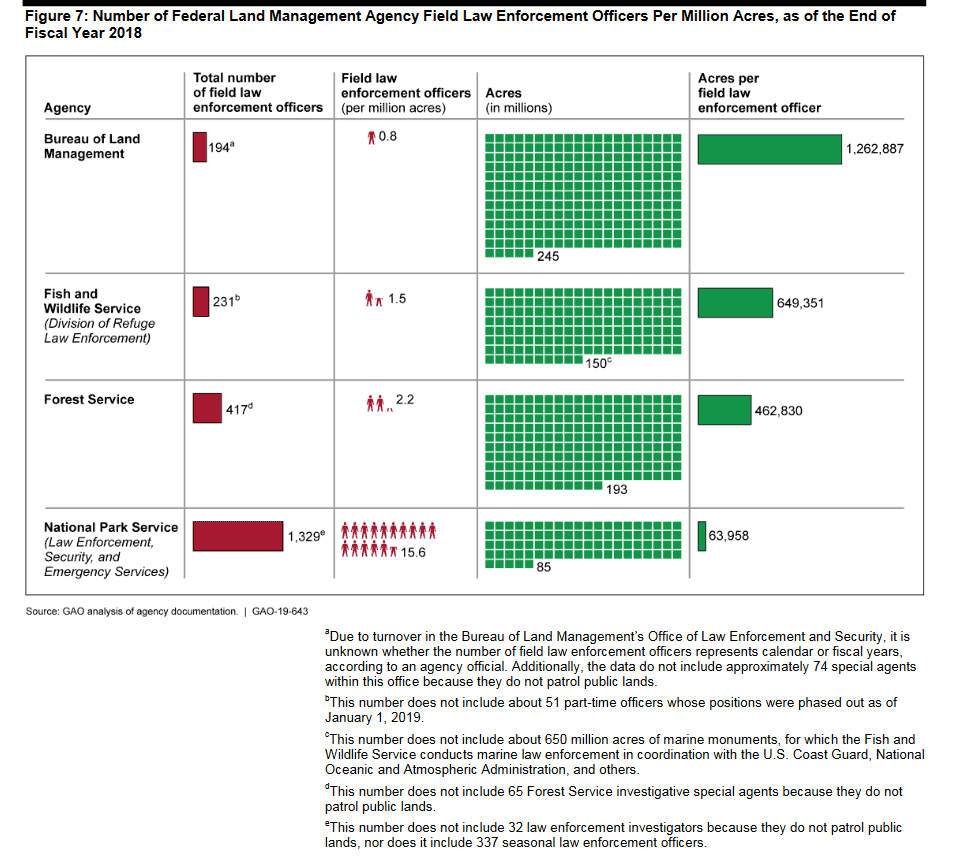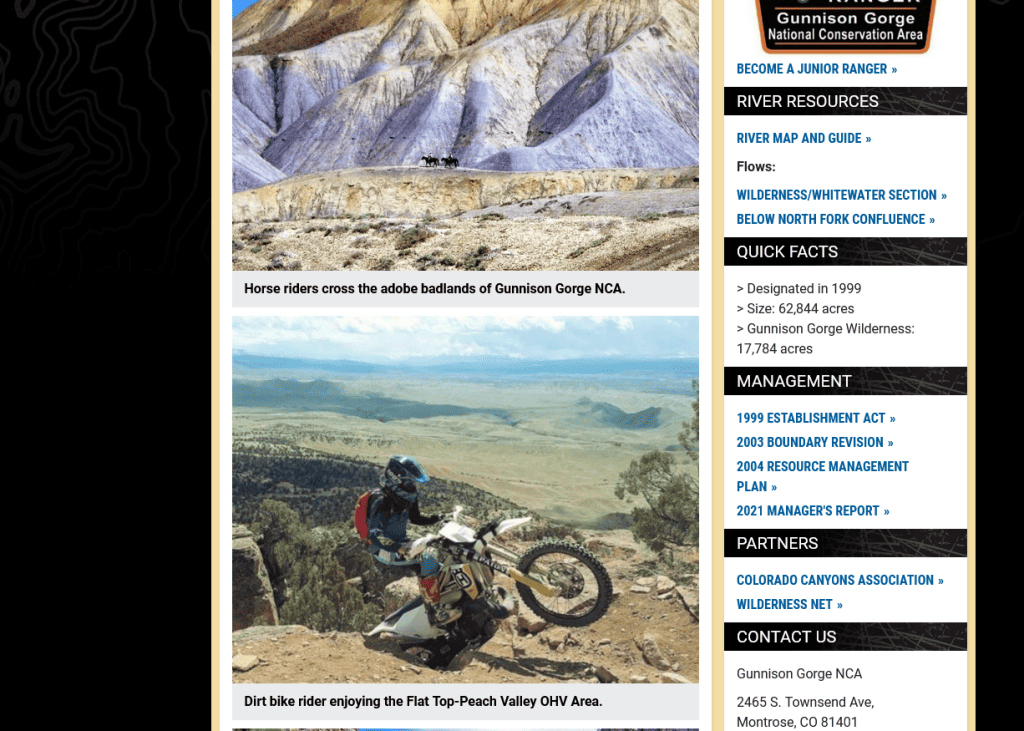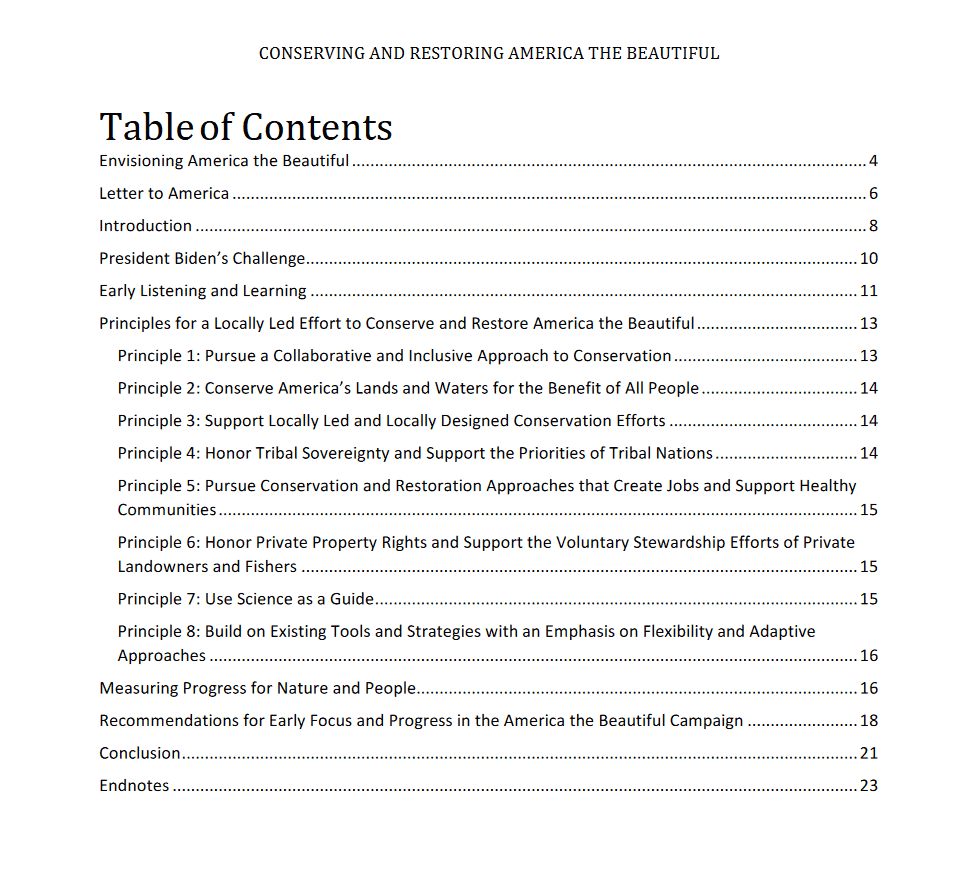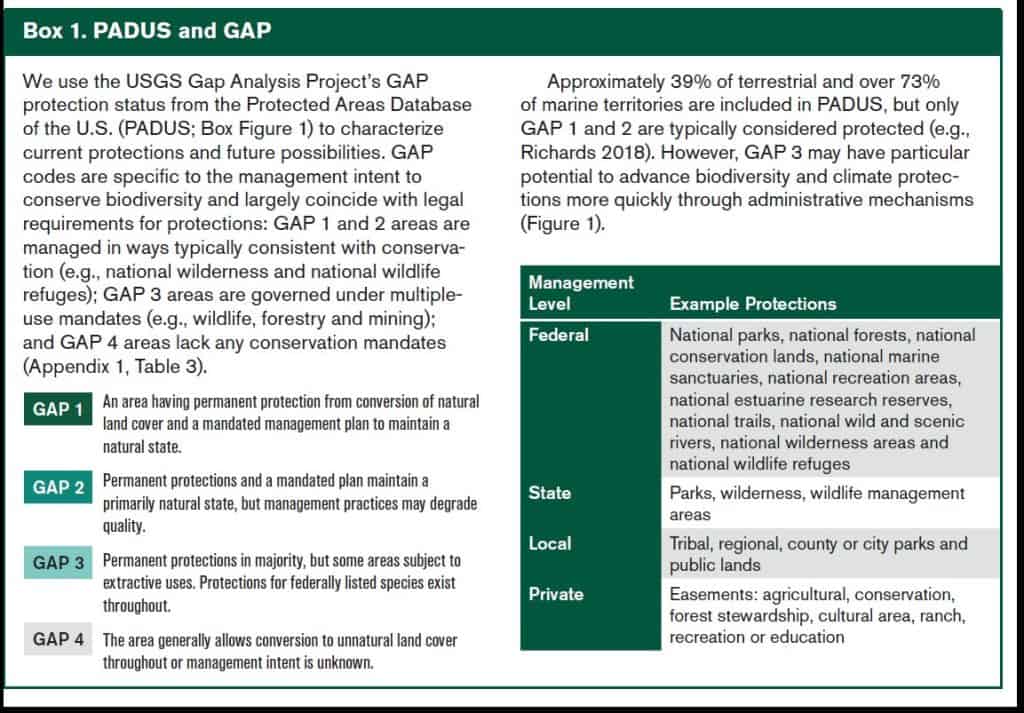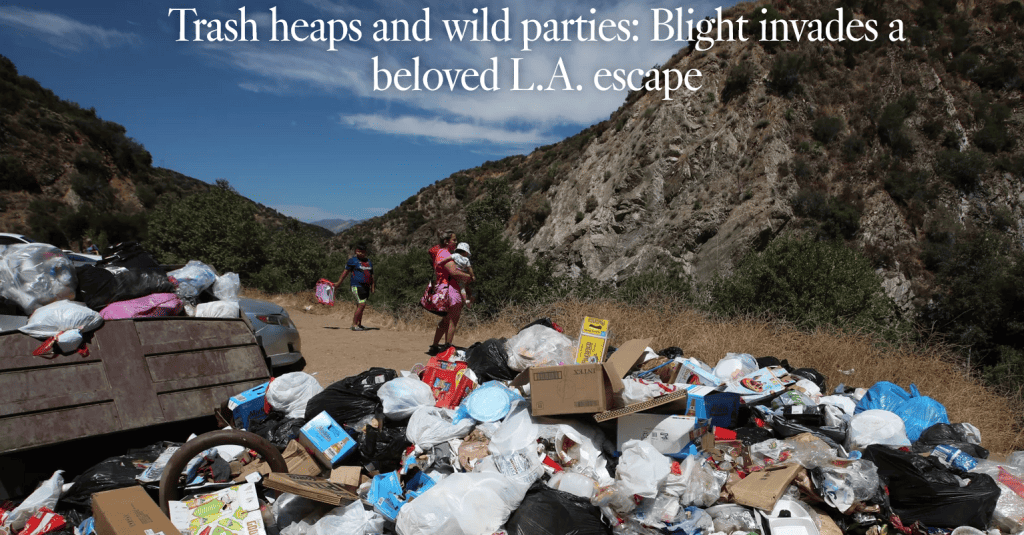Note: this post has been updated to reflect corrections on the mineral leasing vs. locatable question supplied by a member of the TSW community.
Having read through the Proclamation, my impressions were that 1) there’s a lot of human roads, powerlines, and other human development within the Monument, 2) not much is going to change except for some things about new minerals*, and 3) there’s a lot more planning and advisory groups and and public involvement. Which will keep agency folks likely tied up from doing the fuels and prescribed burning funded by Congress and managing recreation pressure. With reduced numbers of people and difficulty hiring- on the other hand, I didn’t see a required plan timeline (maybe I missed it). And it often takes two years to get all the FACA paperwork done, which would potentially take us past the beginning of the next Admin. It might have been simpler to say “hey FS and BLM, you’re doing a swell job at protecting things, we’re just going to order no new mineral leasing..”. But perhaps there’s no legal way to do that kind of surgical intervention focused on what appears to be the real target.
*update-“Uranium is not a leasable mineral under the Mineral Leasing Act. It is locatable under the Mining Law of 1872. So DOI is closing off the land to entry under the Mining Law to stop uranium development. Those holding mining claims will likely be required to go through a validity determination to determine if they have a commercially viable mine under the tests established by that process. It’s possible that the withdrawal from all forms of entry under public land law could prohibit wind and solar facilities that are permitted under FLPMA title V ROW. They are only allowed to use public land for wind and solar if they obtain a ROW permit under FLPMA the public land law statute. All the existing infrastructure is a FLPMA Valid Existing Right and protected by Fifth Amendment, FLPMA and terms of proclamation.”
“History: 1. Clinton designated a number of BLM monuments at the end and when Bush administration arrived they were left with the planning that does go through NEPA.
2. Obama’s 20 year withdrawal of this same area was challenged by NMA (National Mining Association) unsuccessfully in AZ and Ninth Circuit. NMA v. Zinke [Salazar] (2017) arguing the Secretary lacked withdrawal authority among other reasons. The litigation started in 2011 over the NEPA prepared for the withdrawal by Salazar.”
And going back to the previous post, remember that to the GAP 1 and 2 types, the whole Monument is now more Protected (roads and all) than a Forest Service Roadless Area, or even than it was two weeks ago.
****************************
Interesting story by Bobby Magill in Bloomberg Law..
The monument will help the US atone for forcibly removing tribes from parts of the Grand Canyon when Congress declared it a national park more than a century ago, a senior White House official said, speaking to reporters Monday on condition of anonymity.
Hmm.. helping “atone”. Why not just give the Park back to the Tribes directly?
Anyway..
The monument will help address past injustices and protect lands that many tribes refer to as their ancestral home, the official said. The land around the Grand Canyon shouldn’t be open to new mining claims, the official said. Mining companies are interested in the area to help boost a domestic uranium industry they see as key to bolstering emissions-free nuclear energy. Environmental and tribal groups worry uranium mining will contaminate water flowing through tribal land and harm the Grand Canyon.
But the monument isn’t expected to block Energy Fuels Inc. from mining for uranium at its existing Pinyon Plain Mine, which will be within the monument about 13 miles south of the Grand Canyon.
Some Mining Continues
The company’s rights to uranium and high-grade copper deposits at Pinyon Plain have been affirmed by federal courts, Energy Fuels Vice President Curtis Moore said. Even with the monument designation, the company is preparing for production to begin sometime within the next two years, he said. The company has other uranium prospects in the area, and if the monument threatens any valid existing rights to those minerals, “we’d probably have to pursue a takings challenge,” Moore said.
“It just doesn’t seem like great policy to be locking up our best uranium deposits,” Moore said, calling them “carbon killers” because they provide fuel for nuclear power plants. All valid existing rights to minerals within the monument, including uranium, will be preserved, White House officials said. The monument affects only future mining claims.
Back to the Declaration:
All Federal lands and interests in lands within the boundaries of the monument are hereby appropriated and withdrawn from all forms of entry, location, selection, sale, or other disposition under the public land laws or laws applicable to the Forest Service, other than by exchange that furthers the protective purposes of the monument; from location, entry, and patent under the mining laws; and from disposition under all laws relating to mineral and geothermal leasing.
**************
Public Involvement, some Service-Firstiness and Joint Planning
The Secretaries shall provide for maximum public involvement in the development of the management plan, as well as consultation with federally recognized Tribal Nations and conferral with State and local governments. In preparing the management plan, the Secretaries shal1 take into account, to the maximum extent practicable, maintaining the undeveloped character of the lands within the monument; minimizing impacts from surface-disturbing activities; providing appropriate access for livestock grazing, recreation, hunting, fishing, dispersed camping, wildlife management, and scientific research; and emphasizing the retention of natural quiet, dark night skies and scenic attributes of the landscape. In the development and implementation of the management plan, the Secretaries shall maximize opportunities, pursuant to applicable legal authorities, for shared resources, operational efficiency, and cooperation, and shall, to the maximum extent practicable, carefully incorporate the Indigenous Knowledge or special expertise offered by Tribal Nations and work with Tribal Nations to appropriately protect that knowledge.
I wonder if they need alternatives and an EIS ? “The Important People made all the Important Decisions without involving you, but you folks directly impacted are allowed to color within the lines we’ve drawn” -kind of demoralizing, I would think.
Tribal Nation Co-Stewardship
Lots of Secretaries’ “exploring” this and that language. again it sounds like standard policy under the 2021 Joint Secretarial Order number 3403. But maybe there are differences, perhaps knowledgeable people can point them out?
The Secretaries shall explore opportunities for Tribal Nations to participate in co-stewardship of the monument; explore entering into cooperative agreements or, pursuant to the Indian Self-Determination and Education Assistance Act, 25 U.S.C. 5301 et seq., contracts with Tribes or Tribal organizations to perform administrative or management functions within the monument; and explore providing technical and financial assistance to improve the capacity of Tribal Nations to develop, enter into, and carry out activities under such cooperative agreements or contracts. The Secretaries shall further explore opportunities for funding agreements with Tribal Nations relating to the management and protection of traditional cultural properties and other culturally significant programming associated with the monument.
The Secretaries shall consider appropriate mechanisms to provide for temporary closures to the general public of specific portions of the monument to protect the privacy of cultural, religious, and gathering activities of members of Tribal Nations.
There’s a Tribal Commission to give input on the plan and management of the Monument. There’s also a FACA Committee with a RAC-like list of the usual suspects.
The advisory committee shall consist of a fair and balanced representation of interested stakeholders, including the Arizona Game and Fish Department; other State agencies and local governments; Tribal Nations; recreational users; conservation organizations; wildlife, hunting, and fishing organizations; the scientific community; the ranching community; business owners; and the general public in the region.
The Monument Already Has Lots of Human Structures and Those Things Can Be Expanded and New Ones Built
Nothing in this proclamation shall be construed to preclude the renewal or assignment of, or interfere with the operation, maintenance, replacement, modification, upgrade, or access to, existing or previously approved flood control, utility, pipeline, and telecommunications sites or facilities; roads or highway corridors; seismic monitoring facilities; wildlife management structures; or water infrastructure, including wildlife water developments or water district facilities, within the boundaries of existing or previously approved authorizations within the monument. Existing or previously approved flood control, utility, pipeline, telecommunications, and seismic monitoring facilities; roads or highway corridors; wildlife management structures; and water infrastructure, including wildlife water developments or water district facilities, may be expanded, and new facilities of such kind may be constructed, to the extent consistent with the proper care and management of the objects identified above and subject to the Secretaries’ authorities, other applicable law, and the provisions of this proclamation related to roads and trails.
Transportation Planning
For purposes of protecting and restoring the objects identified above, the Secretaries shall prepare a transportation plan that designates the roads and trails on which motorized and non-motorized mechanized vehicle use, including mountain biking, will be allowed. The transportation plan shall include management decisions, including road closures and travel restrictions consistent with applicable law, necessary to protect the objects identified in this proclamation. Except for emergency purposes, authorized administrative purposes, wildlife management conducted by the Arizona Game and Fish Department, and the retrieval of legally harvested elk and bison, which are otherwise consistent with applicable law, motorized vehicle use in the monument may be permitted only on roads and trails documented as existing in BLM and Forest Service route inventories that exist as of the date of this proclamation. Any additional roads or trails designated for motorized vehicle use must be designated only for public safety needs or the protection of the objects identified above.
It’s not clear to me if temp roads for fuel treatments would be OK..”public safety” “protection of species (species being an object identified above)?” But those wouldn’t be system roads so.. and here’s more on veg management:
The Secretaries may carry out vegetative management treatments within the monument to the extent consistent with the proper care and management of the objects identified above, with a focus on addressing ecological restoration; wildlife connectivity; or the risk of wildfire, insect infestation, invasive species, or disease that would endanger the objects identified in this proclamation or imperil public safety. Nothing in this proclamation shall be construed to alter the authority of any party with respect to the use of prescribed fire within the monument.
Grazing and Fire Suppression
Nothing in this proclamation shall be deemed to prohibit grazing pursuant to existing leases or permits within the monument, or the renewal or assignment of such leases or permits, which the BLM and Forest Service shall continue to manage pursuant to their respective laws, regulations, and policies.
Nothing in this proclamation shall be construed to alter the authority or responsibility of any party with respect to emergency response activities within the monument, including wildland fire response.
Military Uses and Fish and Wildlife
Nothing in this proclamation shall preclude low-level overflights of military aircraft, flight testing or evaluation, the designation of new units of special use airspace, the use or establishment of military flight training routes, or low-level overflights and landings for wildlife management conducted by the Arizona Game and Fish Department over the lands reserved by this proclamation. Nothing in this proclamation shall preclude air or ground access to existing or new electronic tracking communications sites associated with special use airspace and military training routes.
Nothing in this proclamation shall be deemed to enlarge or diminish the jurisdiction or authority of the State of Arizona with respect to fish and wildlife management, including hunting and fishing, on the lands reserved by this proclamation, or to affect the State’s access to the monument for wildlife management, including access prior to and during the development of the management and transportation plans provided for above. The Secretaries shall seek to develop and implement science-based habitat and ecological restoration projects within the monument and shall seek to collaborate with the State of Arizona on wildlife management within the monument, including through the development of new, or the continuation of existing, memoranda of understanding with the Arizona Game and Fish Department.
